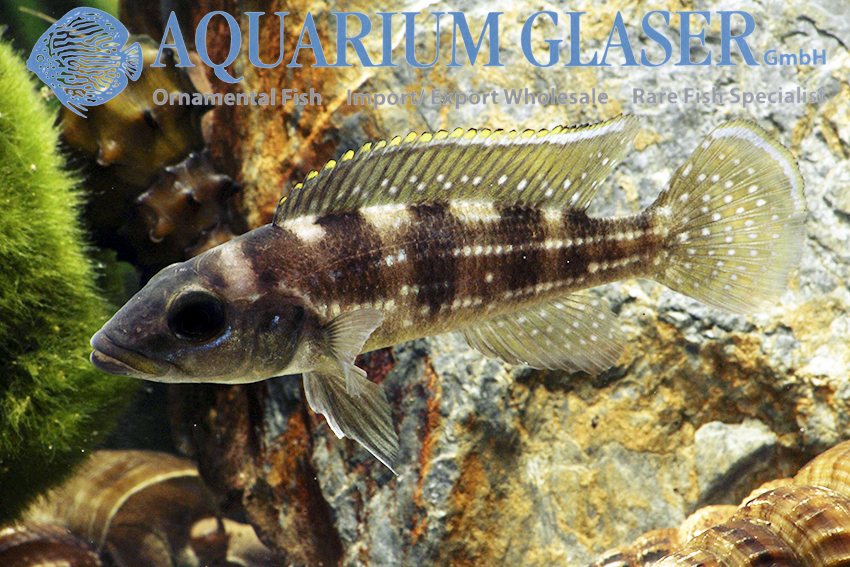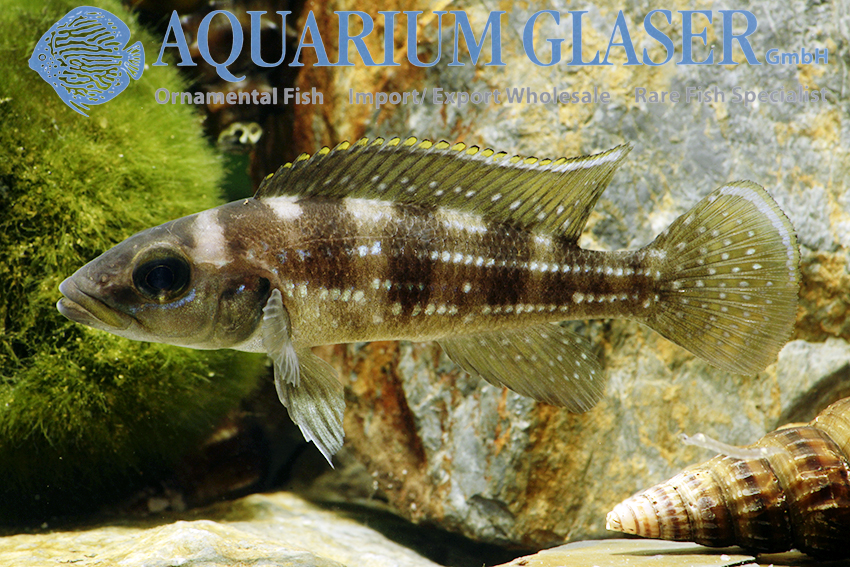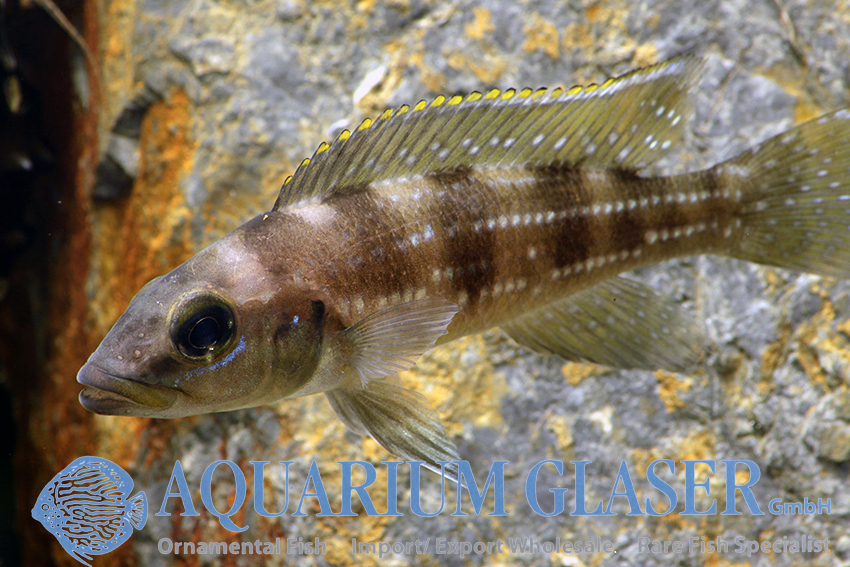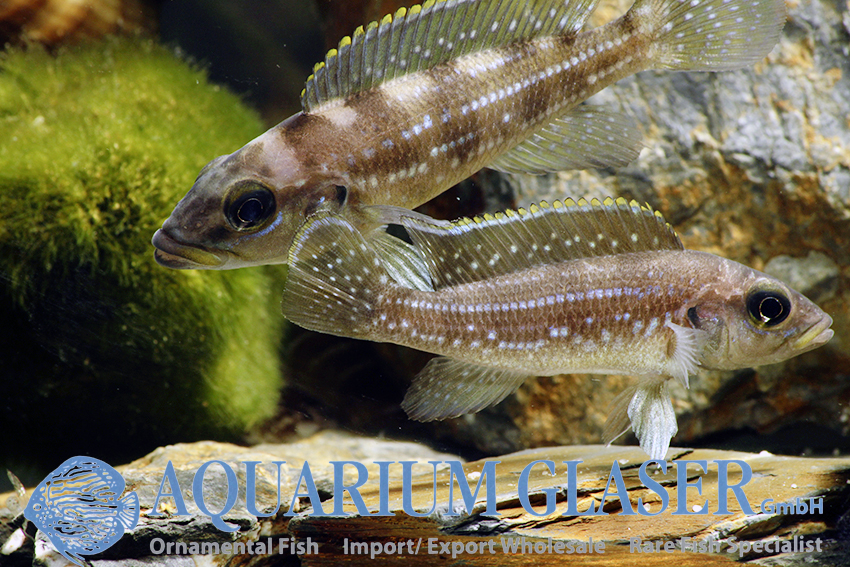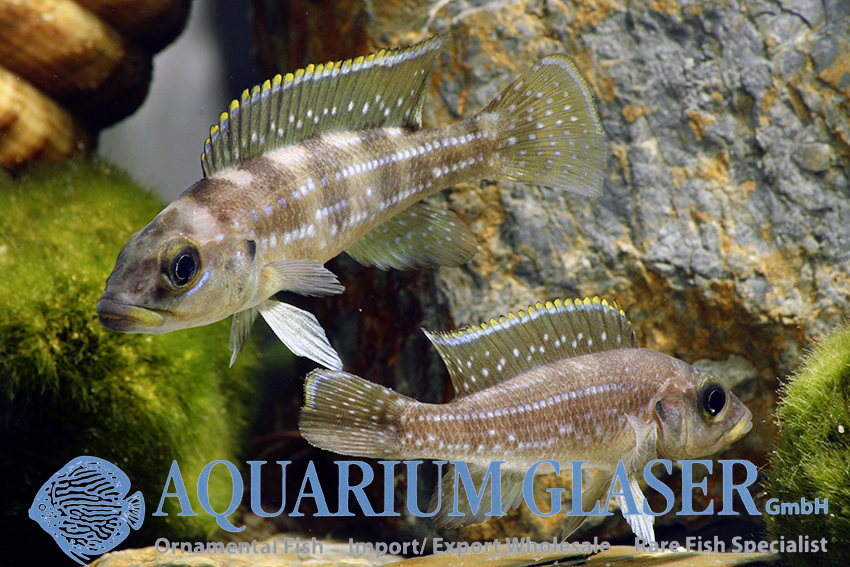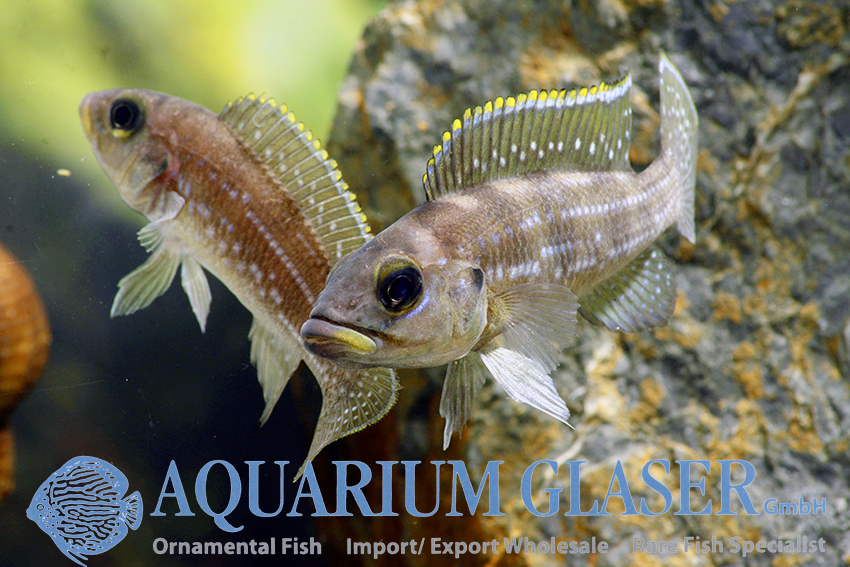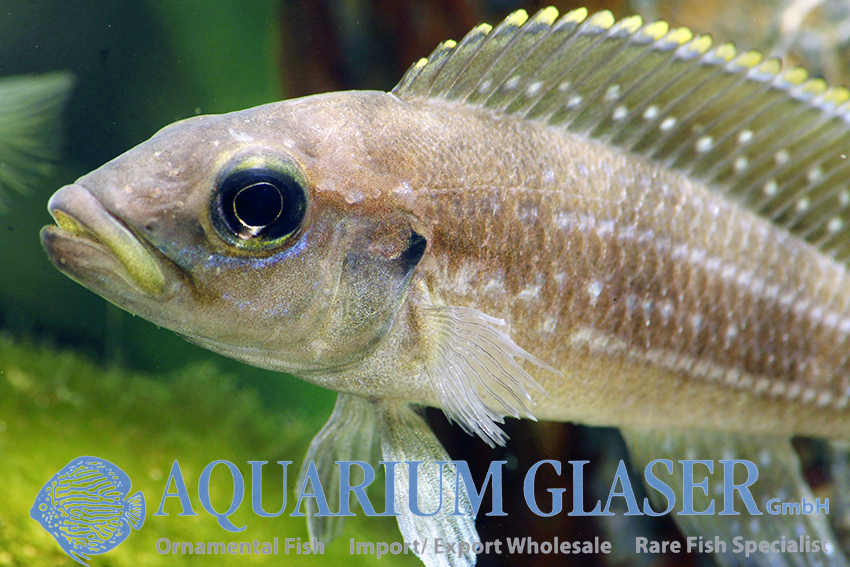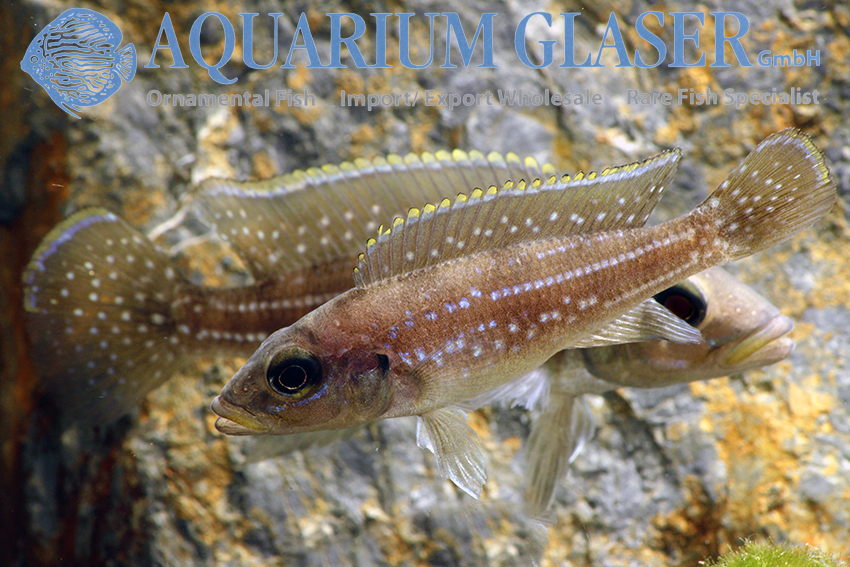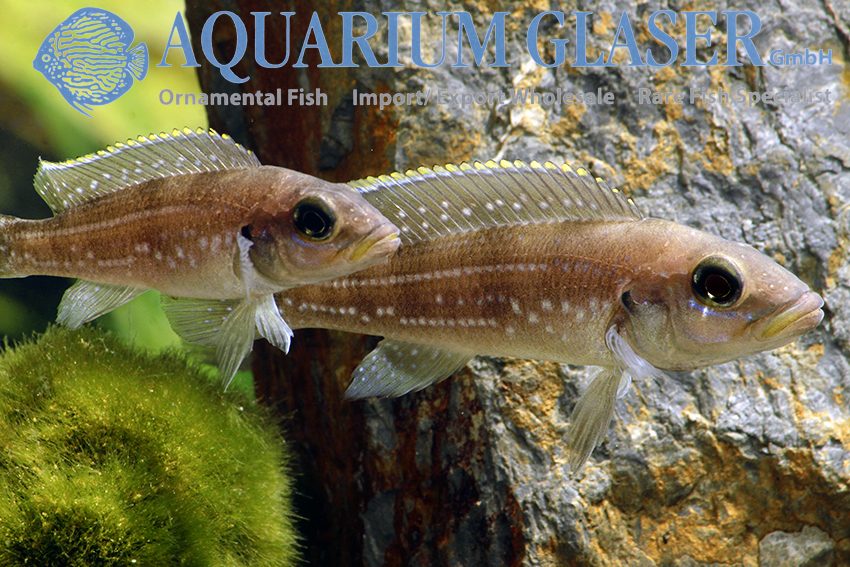This species of cichlid from Lake Tanganyika lives in two different worlds. The fish attains a maximum length of about 20 cm; however, in the wild hardly ever specimens larger than 10-12 cm can be found. On the one hand this fish is a typical inhabitant of sandy areas. Here it feeds on small invertebrates. Most wanted are small snails, which are sucked out of their shells, but the species is not specialized at all and readily accepts all types of meat that fit the mouth.
On the other hand N. tetracanthus is a cave brooder and needs caves and crevices in rocks for that. Both sexes take very good care of eggs and youngsters and defend them aggressively.
This explains the sometimes very contradictory experiences aquarists make with that species in respect of aggressiveness. As long as the cichlids are not in breeding mood they are quite peaceful. It makes only little sense to defend territories on sand. But when the fish are in the mood for breeding they become pretty tough, because usually all potential breeding grounds in the rocky area are already housed by other fish.
For our customers: the fish have code 549501 on our stocklist. Please note that we exclusiveyl supply the wholesale trade.
Text & photos: Frank Schäfer





